Shared with Dropbox.
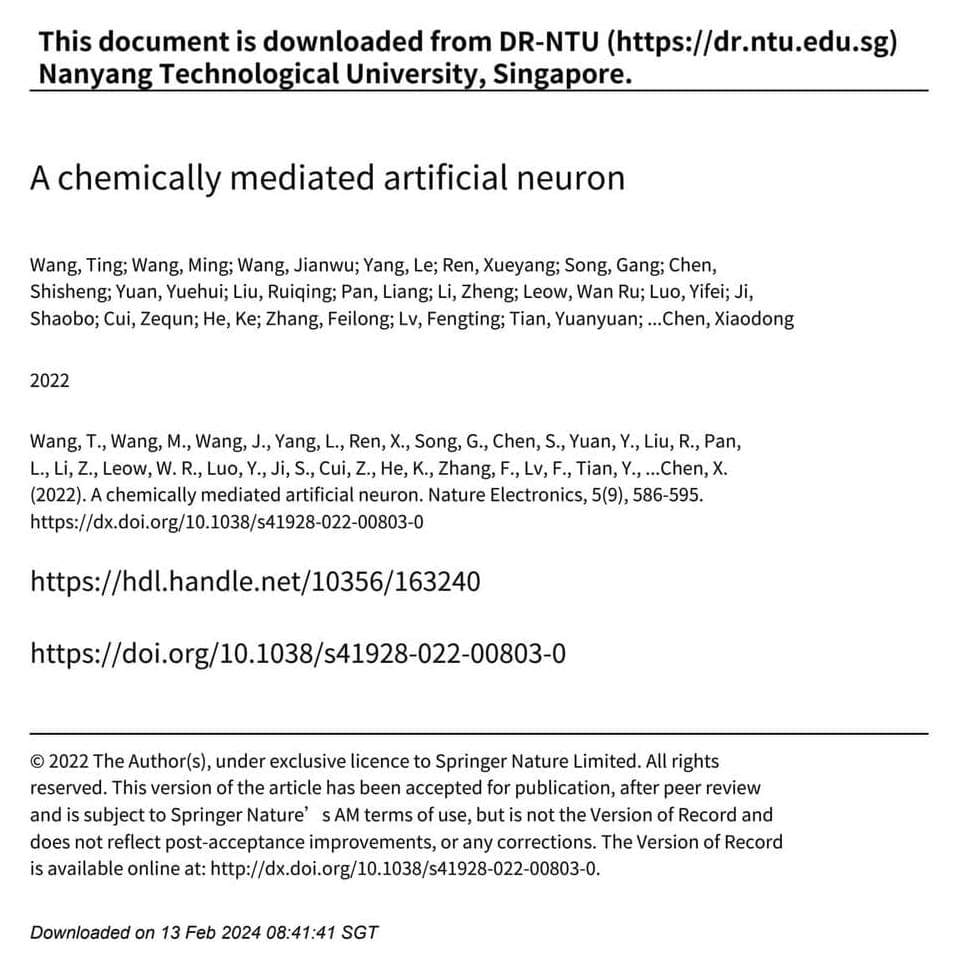

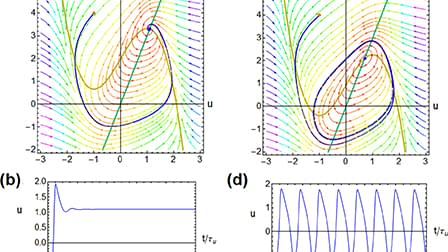
Divice recipe for making spiking artificial neurons.
Neurons, which are made of biological tissue, exhibit cognitive properties that can be replicated in various material substrates. To create brain-inspired computational artificial systems, we can construct microscopic electronic neurons that mimic natural systems. In this paper, we discuss the essential material and device properties needed for a spiking neuron, which can be characterized using impedance spectroscopy and small perturbation equivalent circuit elements. We find that the minimal neuron system requires a capacitor, a chemical inductor, and a negative resistance. These components can be integrated naturally in the physical response of the device, instead of built from separate circuit elements. We identify the structural conditions for smooth oscillations that depend on certain dynamics of a conducting system with internal state variables. These state variables can be of diverse physical nature, such as properties of fluids, electronic solids, or ionic organic materials, implying that functional neurons can be built in various ways. We highlight the importance of detecting the Hopf bifurcation, a critical point in achieving spiking behavior, through spectral features of the impedance. To this end, we provide a systematic method of analysis in terms of the critical characteristic frequencies that can be obtained from impedance methods. Thus, we propose a methodology to quantify the physical and material properties of devices to produce the dynamic properties of neurons necessary for specific sensory-cognitive tasks. By replicating the essential properties of biological neurons in electronic systems, it may be possible to create brain-inspired computational systems with enhanced capabilities in information processing, pattern recognition, and learning. Additionally, understanding the physical and material properties of neurons can contribute to our knowledge of how biological neurons function and interact in complex neural networks. Overall, this paper presents a novel approach toward building brain-inspired artificial systems and provides insight into the important material and device considerations for achieving spiking behavior in electronic neurons.
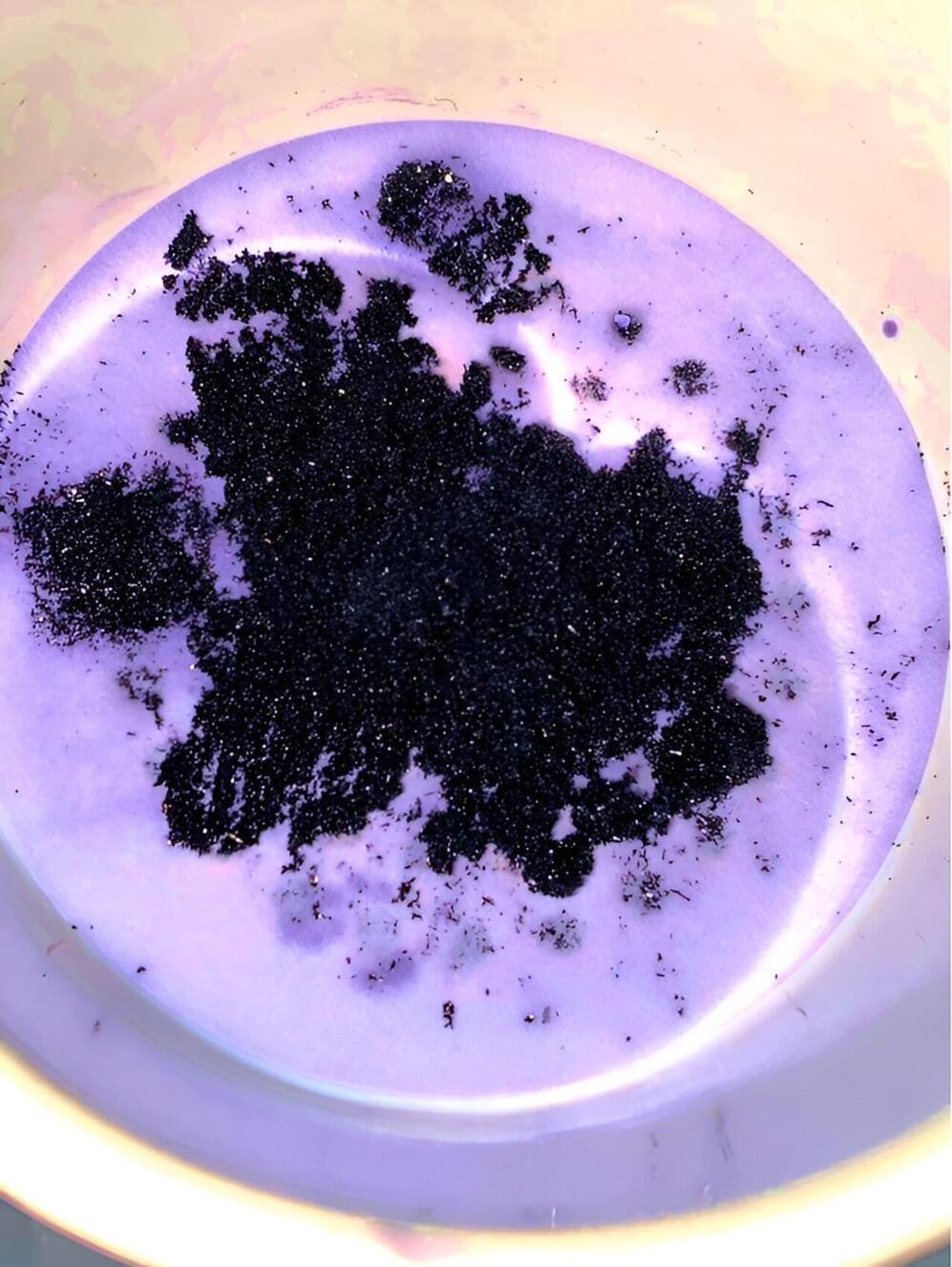
A chemical element so visually striking it was named for a goddess shows a “Goldilocks” level of reactivity—neither too much nor too little—that makes it a strong candidate as a carbon scrubbing tool.
The element is vanadium, and research by Oregon State University scientists, published in Chemical Science, has demonstrated the ability of vanadium peroxide molecules to react with and bind carbon dioxide —an important step toward improved technologies for removing carbon dioxide from the atmosphere.
The study is part of a $24 million federal effort to develop new methods for direct air capture, or DAC, of carbon dioxide, a greenhouse gas that’s produced by the burning of fossil fuels and is associated with climate change.

We tend to separate the brain and muscle – the brain does the thinking; the muscle does the doing. The brain takes in complex information about the world, makes decisions, while muscle merely executes. This distinction extends to our understanding of cellular processes, where certain molecules within cells are perceived as the ‘thinkers’, processing information from the chemical environment to determine necessary actions for survival, while others are viewed as the ‘muscle’, constructing the essential structures for the cell’s survival.
But a new study shows how the molecules that build structures, i.e, the muscle, can themselves do both the thinking and the doing. The study, by scientists at Maynooth University, the University of Chicago, and California Institute of Technology was published in the journal Nature.
“We show that a natural molecular process – nucleation – that has been studied as a ‘muscle’ for a long time can do complex calculations that rival a simple neural network,” said University of Chicago Associate Professor Arvind Murugan, one of the two senior co-authors on the paper. “It’s an ability hidden in plain sight that evolution can exploit in cells to do more with less; the ‘doing’ molecules can also do the ‘thinking.’”
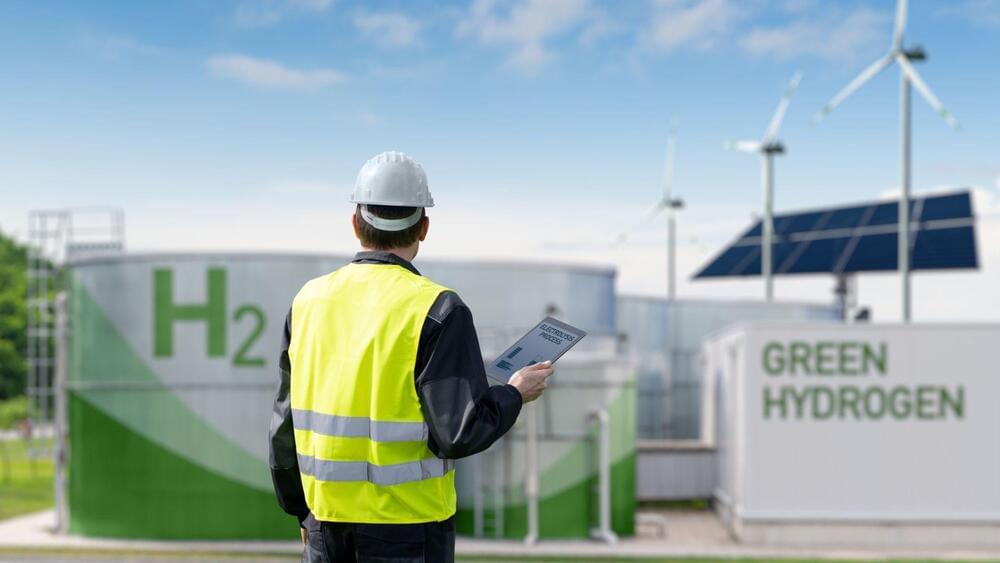
Researchers at the Ulsan National Institute of Science and Technology (UNIST) have unveiled a promising photoelectrochemical (PEC) system capable of generating green hydrogen on a large scale.
The team introduces an innovative approach utilizing formamidinium lead triiodide (FAPbI3) perovskite-based photoanodes, encapsulated by a robust Ni foil/NiFeOOH electrocatalyst.
Speaking to Tech Xplore, Jae Sung Lee, Professor of Energy & Chemical Engineering at UNIST and co-author of the paper, highlighted the critical need for efficiency in solar-to-hydrogen (STH) conversion, emphasizing that a minimum of 10% STH efficiency is essential for practical PEC systems. “Our group has thoroughly studied the challenges associated with practical solar hydrogen production,” Lee added.
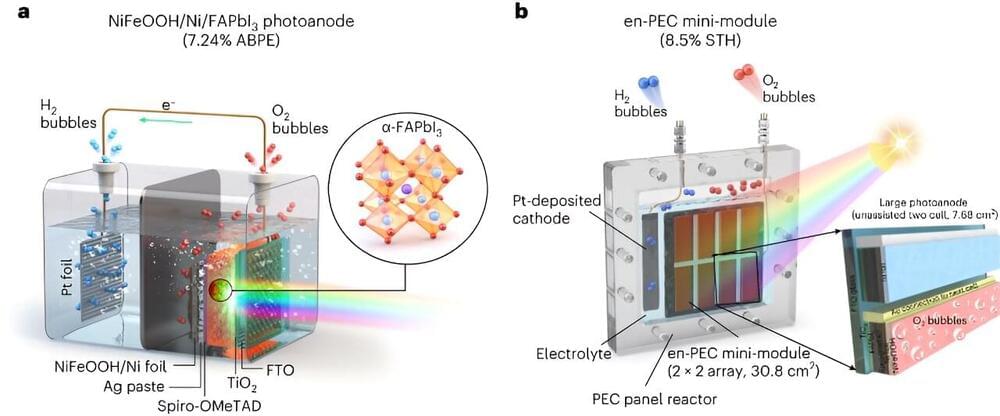
If realized using solar energy or other renewable energy, water splitting could be a promising way of sustainably producing hydrogen (H2) on a large-scale. Most photoelectrochemical water splitting systems proposed so far, however, have been found to be either inefficient, unstable, or difficult to implement on a large-scale.
Researchers at Ulsan National Institute of Science and Technology (UNIST) recently set out to develop a scalable and efficient photoelectrochemical (PEC) system to produce green hydrogen. Their proposed system, outlined in Nature Energy, is based on an innovative formamidinium lead triiodide (FAPbI3) perovskite-based photoanode, encapsulated by an Ni foil/NiFeOOH electrocatalyst.
“Our group has thoroughly studied the challenges associated with practical solar hydrogen production,” Jae Sung Lee, Professor of Energy & Chemical Engineering at UNIST and co-author of the paper, told Tech Xplore. “As summarized in our most recent review paper, minimum 10% of solar-to-hydrogen (STH) efficiency is required to develop viable practical PEC system, for which selecting an efficient material is the first criteria.”
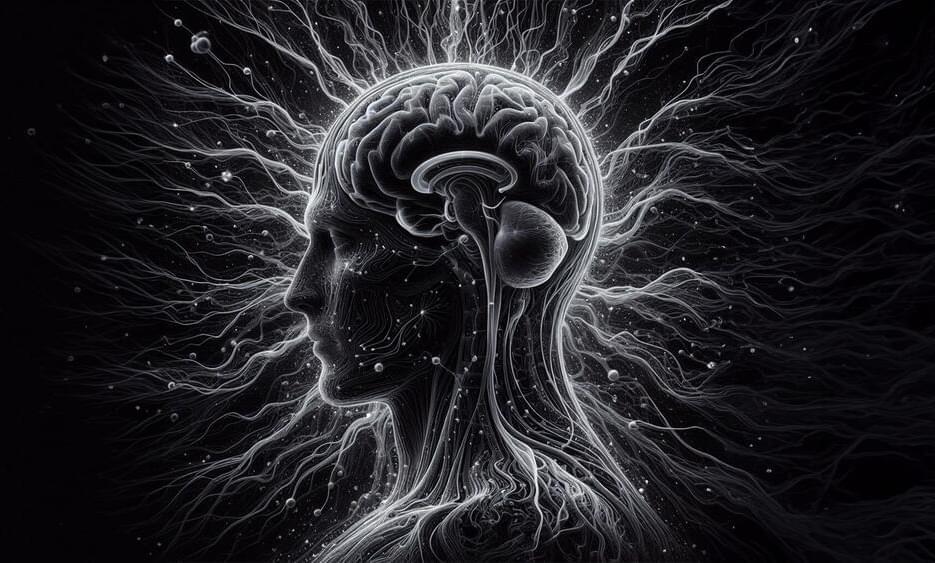
Scientists at the University of Pennsylvania have unveiled a revolutionary method to study the microscopic structures of the human brain. The study, led by Benjamin Creekmore in the labs of Yi-Wei Chang and Edward Lee, promises to enhance our understanding of various brain diseases, including Alzheimer’s and multiple sclerosis.
Cryo-electron tomography takes center stage
Traditionally, scientists have utilized electron microscopy to explore and comprehend the intricate details of cellular structures within the brain. However, this method has been fraught with challenges, such as the alteration of cell structures due to the addition of chemicals and physical tissue cutting.

Highly reducing or oxidizing photocatalysts are a fundamental challenge in photochemistry. Only a few transition metal complexes with Earth-abundant metal ions have so far advanced to excited state oxidants, including chromium, iron, and cobalt. All these photocatalysts require high energy light for excitation and their oxidizing power has not yet been fully exploited. Furthermore, precious and hence expensive metals are the decisive ingredients in most cases.
A team of researchers headed by Professor Katja Heinze of Johannes Gutenberg University Mainz (JGU) has now developed a new molecular system based on the element manganese. Manganese, as opposed to precious metals, is the third most abundant metal after iron and titanium and hence widely available and very cheap. The study is published in the journal Nature Chemistry.

Nobel laureate details new applications at Kuh Distinguished Lecture.
Jennifer Doudna, Nobel laureate and Li Ka Shing Chancellor’s Chair and Professor in the Departments of Chemistry and of Molecular and Cell Biology, presented this year’s Ernest S. Kuh Distinguished Lecture, “Delivering the Future of CRISPR-Based Genome Editing,” on February 2 at UC Berkeley. The sold-out event — produced by Berkeley Engineering in collaboration with the Society of Women Engineers — marks the 11th talk in the lecture series, which features scientists and engineers tackling the world’s most pressing problems.
Doudna is known for developing CRISPR-Cas9, a groundbreaking technology that some call “genetic scissors.” With it, scientists can snip and edit DNA — the genetic code of life — unlocking remarkable possibilities in biology, including treatments for thousands of intractable diseases. This work has changed the course of genomics research, allowing scientists to rewrite DNA with unprecedented precision, and won Doudna and collaborator Emmanuelle Charpentier the 2020 Nobel Prize in Chemistry.
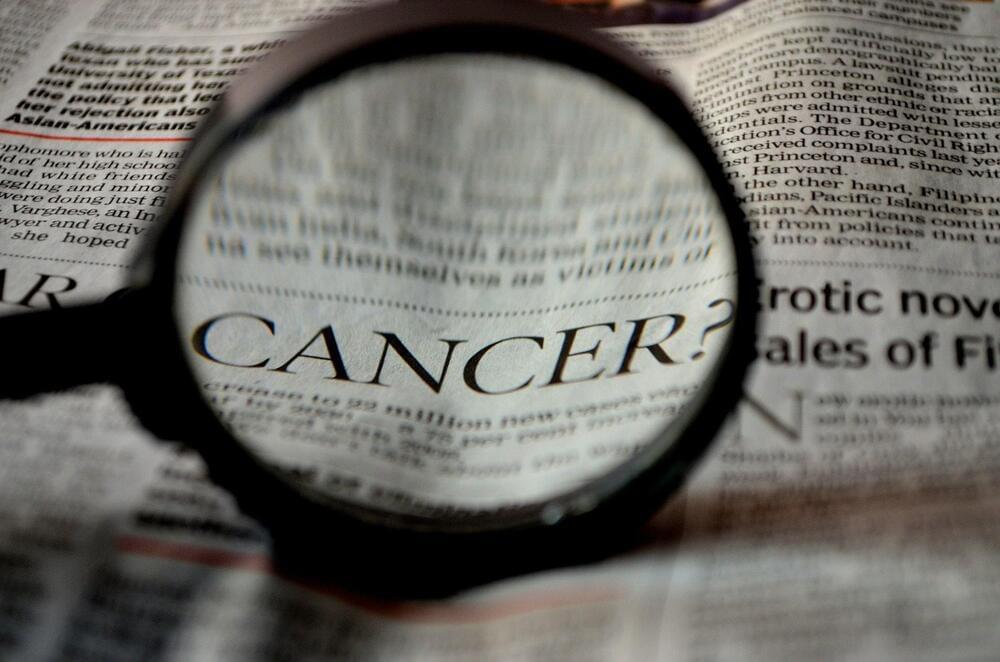
A new stool test appears to detect colorectal cancer precursors better than the current fecal immunochemical test. This could further reduce the number of new colorectal cancer cases as well as the number of people dying from the disease. A study led by the Netherlands Cancer Institute compared both tests.
Their results are published in The Lancet Oncology.
Each year worldwide, approximately 1.9 million people are diagnosed with colorectal cancer, and 935,000 people lose their lives as a result of the condition. If detected early, colorectal cancer is curable. However, by the time symptoms such as weight loss or blood in the stool appear, it is often too late. That is why many countries have introduced population-based screening programs. In The Netherlands, for example, people between the ages of 55 and 75 are invited to be tested every two years.